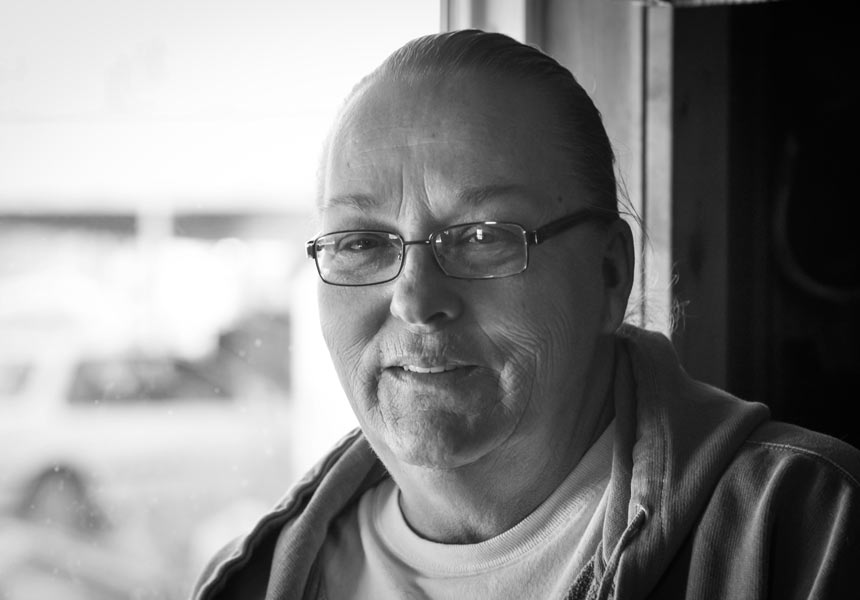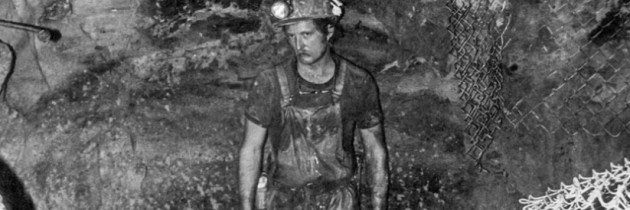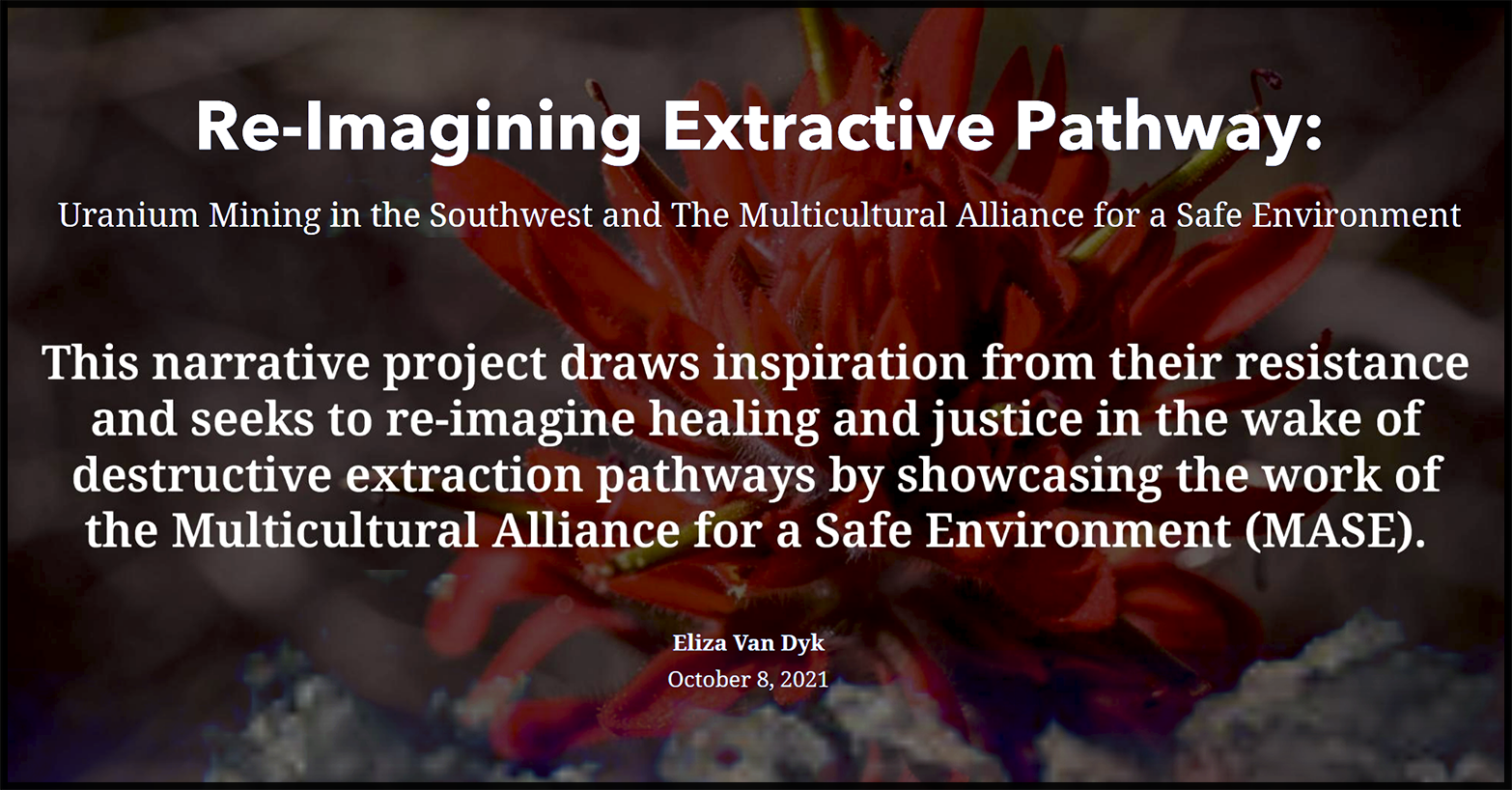Uranium Mine and Mill Workers are Dying, and Nobody Will Take Responsibility
In the Southwest, poisoned uranium workers are still seeking justice
To talk to former uranium miners and their families is to talk about the dead and the dying. Brothers and sisters, coworkers and friends: a litany of names and diseases. Many were, as one worker put it, “ate up with cancer,” while others died from various lung and kidney diseases. When the former workers mention their own diseases, it’s clear, though unspoken, that they’re also dying. Some don’t wait for the disease to take them: “Poor guy says he don’t wanna be in a diaper,” says one worker of his brother-in-law, a former miner with lung disease who was facing hospice. “He got a gun and shot himself.”
Women who worked in the mines and mills also bore the risk of reproductive disorders and babies with birth defects. “[Supervisors] told me … as long as I could do the job, there was no reason to worry about my baby,” says Linda Evers, 57. Both of her children had birth defects. Her daughter was born without hips.

Linda Evers, who worked in a uranium mill in the 1970s, says, “Every day, they told us we were doing our part for the Cold War effort.” (Photograph by Joseph Sorrentino)
I spent a week interviewing former uranium workers (those who worked in the mines and the mills and, sometimes, both) and their families in the towns of Grants and Church Rock, N.M.: ground zero for uranium mining from the mid-1950s until the early 1980s. Years, sometimes decades, after laboring in the mines and mills, workers exhibit diseases associated with uranium exposure. The federal government, under a program called the Radiation Exposure Compensation Act (RECA), has paid more than $750 million in restitution to uranium workers on nearly 8,000 claims. But in order to receive compensation, workers have to have been employed before 1972—the year the federal government stopped purchasing uranium for its nuclear arms build-up. The workers I spoke with are part of a group of thousands who worked in uranium mines or mills after December 31, 1971, and have diseases linked to uranium exposure, but, so far, cannot get compensation from RECA.
Spouses of former workers also suffer health effects, even though they may have never set foot in a mine or mill. The Post ’71 Uranium Workers Committee, an advocacy organization cofounded by Linda Evers, surveyed 421 wives of uranium workers and found that 40 percent reported miscarriages, stillbirths or children with birth defects. One vector of contamination may have been laundry brought home from the mines. Cipriano Lucero, 61, worked in the Anaconda mill, where uranium was processed into yellowcake, a toxic substance. “[His clothes] were stinky and yellow and no matter how much bleach, they would never come out, they were still yellow,” says his wife, Liz, adding, “I would wash his clothes with our clothes.”
Liz was diagnosed with tumors in her ovaries when she was 28 and had to have a hysterectomy. She says the doctor told her it was uranium-related. Liz and Cipriano cofounded the Post ’71 Uranium Workers Committee with Evers.
So who’s to blame?
Uranium mining has long been known to be dangerous work. As early as 1546, in Schneeberg, Germany, it was noted that large numbers of uranium miners were dying from lung disease. The first scientific report linking uranium mining and lung disease was published in Germany in 1879, and that disease was shown in 1913 to be lung cancer. More scientific articles in the 1930s and 1940s seemed to indicate that radon and “radon daughters,” byproducts of uranium decay, were the primary cause.
But, driven by the Cold War push for nuclear arms, uranium mining continued unchecked with “little attention… paid to the health of uranium miners,” according to a Department of Labor historian.
In 1950, an Irish-Navajo sheep herder named Paddy Martinez found a bright yellow rock of uranium ore near Haystack, N.M. That set off a mining boom in the Four Corners (where New Mexico, Arizona, Utah and Colorado meet), providing sorely needed jobs.
“[The men] wanted to provide for their families, and the [mining] companies came in and said, ‘Hey, you guys are gonna make good money, have good benefits,’ ” says Liz Lucero. When she and Cipriano first got married, in 1976, he was working in a gas station for $3.85/hour. He took a job at the Anaconda mill the next year in order to get benefits and more money; about, he figures, $6 an hour. “Had to,” he says. “Had to support our family.”
Companies also lured workers with patriotism. “Every day, they told us we were doing our part for the Cold War effort,” says Linda Evers. “They’d tell us, ‘We won the Cold War because of you guys.’”
As the boom took off, Grants declared itself “The Uranium Capital of the World.”
Workers like Evers say they didn’t understand the dangers of uranium exposure, in part because the diseases take years to manifest. “When I was working, no one had been getting sick,” says Evers.
During the 1960s, Navajos working in uranium mines, few of whom smoked cigarettes, started experiencing high rates of lung cancer. Advocates and workers pressured the federal government—the sole purchaser of uranium from 1948 until 1971—for remedies. In 1979, Sen. Ted Kennedy (D-Mass.) introduced the first bill to compensate uranium workers and others for diseases attributable to radiation exposure, but it wasn’t until 1990 that RECA became law. With RECA, the government recognized its responsibility for the harm done to uranium miners and apologized “on behalf of the nation.” A 2000 bill expanded RECA to cover uranium mill workers, ore transporters and above-ground miners. Workers with diseases such as lung cancer, pulmonary fibrosis and silicosis are eligible for $100,000 in restitution. But the act only covers workers who were employed before 1972.
The Four Corners mining boom continued, however, thanks to nuclear power. It didn’t slow until 1979, when a glut of uranium on the world market led to a steep price drop, and layoffs began. By 1989, the last conventional uranium mine in New Mexico had closed.
All of the dozen former workers interviewed for this article worked after 1971 and are therefore denied RECA benefits. Tommy Reed, who worked in the mines until 1983 and has a constant cough, as well as skin and lung problems, finds this untenable. “We did the same work, have the same diseases, but we’re not covered,” he says. “What’s the rationale behind that?”
According to Chris Shuey, who directs the Uranium Impact Assessment Study at the Southwest Research and Information Center in Albuquerque, the government reasoned its responsibility ended in 1971 when it stopped purchasing uranium. Many Congress members, he adds, believe the new standards on radiation exposure passed in 1969 protected uranium workers. Yet, post-1971 workers are still dying. Something didn’t work.
A failure to regulate
Health and safety protections for uranium workers were, for many years, spotty at best and negligent at worst. The Department of the Interior’s Bureau of Mines (BOM), established in 1910 to reduce accidents, had little regulatory authority and was also tasked with “mineral resource development.” State laws were piecemeal: In 1958, for example, New Mexico instituted a policy to “clear all areas” of mines that exceeded safe levels of radon, but “there was limited enforcement,” according to a 2002 National Institutes of Health paper by Doug Brugge and Rob Goble.
Federal responsibility for mine safety was reshuffled twice in the 1970s. The Mining Enforcement and Safety Administration(MESA) took over for the BOM in 1973 due to concerns about conflicts of interest. In 1978, the Department of Labor’s Mine Safety and Health Administration (MSHA) replaced MESA as part of the sweeping reforms of the Federal Mine Safety and Health Act. MSHA also assumed responsibility for uranium mills.
MSHA’s motto is “Protecting Miners’ Safety and Health Since 1978.” Former uranium workers interviewed—all of whom worked at mines and mills from the mid-1970s through 1982 or 1983— don’t believe it did a very good job.
Radon is “one of the most potent carcinogens known,” according to Dr. Gordon Edwards, president of the Canadian Coalition for Nuclear Responsibility. But during the 1970s, government regulations didn’t mandate regular federal inspections to measure radon levels at uranium mines. Neither MSHA nor the National Institute for Occupational Health and Safety (which inherited some of the BOM’s responsibilities) could provide In These Times with confirmation that the government conducted inspections for radon levels at that time. Companies were supposed to self-monitor, and if they detected high levels of radon, implement safety measures.
By 1981, MSHA was supposed to be checking radon levels at the mines annually. Several workers remember inspections, but told In These Times that when inspectors were coming, supervisors had workers barricade the unsafe areas. When the inspectors left, the barricades came down and the workers went back in. At mills, “[inspectors] never got out of the trucks,” says Evers. “Maybe they did, but I never saw them.”
One effective way to reduce exposure to radon is through ventilation. All underground mines are supposed to be well-ventilated, and according to 1973 guidelines, uranium mines specifically had to have “an adequate quantity of good-quality air” in working areas so as to keep radon levels below the threshold. But in a survey of 1,302 post-1971 workers conducted by the Post ’71 Uranium Workers Committee in 2009, only 14 percent said their work areas had adequate ventilation; 36 percent said no and almost half answered “sometimes.”
The ventilation guidelines didn’t extend to uranium mills, despite exposure hazards there as well. At mills, uranium ore is refined into yellowcake, which is 80 percent to 90 percent uranium oxide. When inhaled, it can become embedded in the lungs, increasing the risk of pulmonary fibrosis, which can be fatal. When ingested, it can damage the kidneys.
Cipriano Lucero worked in uranium mills from 1977 to 1982. He has pulmonary fibrosis, and one of his kidneys failed when he was 48, necessitating a transplant. He uses a continuous positive pressure airway machine at night and uses an oxygen tank during the day. Asked whether there was proper ventilation in the mills where he worked, Lucero simply replies, “Not really.” Linda Evers says the dust was so bad in mills that she sometimes couldn’t see. “They had exhaust fans,” she says, “but it wasn’t anything different than an oversized box fan. They just moved [the dust] around.
“We were allowed one dust mask a month, a paper dust mask,” she continues. “After one shift, they were clogged, so we just wore bandanas, or nothing.”
Lucero agrees: “We had masks but they were useless … paper masks only. Sometimes you wouldn’t even have a mask, breathing in all that dust.” Workers often coughed up black soot.
Given the dangers of working with uranium, it would seem that companies should have provided extensive training on radiation hazards—but they did so at their own discretion. “We had a class, lasted about an hour or two,” said Lucero. “Mostly about first aid, if you hurt yourself, how to wrap it.” They didn’t talk about radiation. Larry King, who worked in the mines, mainly as a surveyor, for eight years, said he had only one safety meeting and that was when he started work.
“No one told us of the hazards of radiation, uranium or radon,” he says. Seventy-nine percent of the workers questioned in the Post ’71 survey believed that safety measures—including information and equipment—were inadequate.
Surrounded
Church Rock is located in the Navajo Nation, 55 miles west of Grants. Nestled in red rock hills, the town gets its name from a formation that looks like a steeple. Local Navajo were drawn to the mines, like the residents of Grants, because of the well-paying jobs. Because Navajo miners often worked within walking distance of their homes, their risk of exposure was heightened.
Larry King, who is Navajo, lives about five miles from the entrance to Church Rock Mine, off a gravel road just past a hand-painted “Old Church Rock Mine Road” sign. In addition to the overwhelming likelihood of uranium exposure at work in the mine, there’s a strong chance he was, and may still be, exposed at home. His house is a short distance from where, on July 16, 1979, a tailings pond dam broke, releasing 93 million gallons of radioactive water. It was, by volume, the largest single release of radioactivity in the United States.
King is a sturdy-looking 58-year-old, but he suffers from respiratory problems that leave him fatigued and short of breath when he works on his property, which includes 13 cattle. “I used to do quite a bit of work several years ago, and now I’m limited,” he says.
Five miles north of where King lives is the home of Edith Hood, also a Navajo former mine worker. She worked as a probe technician in the Kerr McGee mine for a total of six years. A quiet 64-year-old, she’s still energetic despite having been diagnosed with lymphoma in 2006. Her front yard is less than half a mile from the abandoned mine where she once worked. Just a short distance away is a buried tailings pile—mine waste that contains uranium and may still be giving off radon. “Since we live and work here,” she says, “it’s a double whammy.”
Waiting
In 2015, bills to amend RECA to include post-1971 workers were introduced in the House and Senate, spearheaded by three Democratic New Mexico legislators: Sens. Tom Udall and Martin Heinrich and Rep. Ben Ray Luján.
It’s the fourth attempt since 2000. Keith Killian, a private attorney in Grand Junction, Colo., who is fighting to get compensation for post-1971 workers, sees reason for “guarded” optimism. “There are bipartisan sponsors,” he says. “That’s really good. In the past we didn’t have a lot of Republicans interested.”
Still, no bill has received a hearing and nothing is scheduled. Neither Senate Judiciary Committee Chair Chuck Grassley (R-Iowa), ranking member Patrick Leahy (D-Vt.) nor House Judiciary Committee Chair Bob Goodlatte responded to requests for comment.
Cipriano Lucero, a soft-spoken man of few words, did what he was told when he worked in the mills. He, like many other uranium workers, said if he complained about working conditions, he risked losing his job. One of his tasks, washing uranium off air filters, required him to stand in foot-deep water containing uranium runoff. Doctors, he says, told him radiation exposure had made his left leg brittle; it broke three times and eventually had to be amputated. Now he has a prosthesis, with a painting of the Virgin of Guadalupe on it. Lucero has trouble walking and usually uses a cane or, when he gets too tired, a motorized wheelchair.
“Some days are terrible,” he says. “I can barely get out of bed. I just wonder how I’m gonna die…suffocate or whatever.” He’s only 61.
“It’s haunting us,” says Jerry Sanchez, who worked as both a miner and miller. “If you worked there, you got it coming. If you don’t have it, it’s coming.”
Grants is the quintessential boom town, post-boom. Now, the best jobs are in the prisons. Along its main street, a stretch of Route 66, there are almost as many weed-infested lots as there are occupied buildings. A half-mile stretch contains six payday loan companies—four in one block. A few large neon signs beckon people to buildings that no longer exist. An abandoned gas station has a large sign advertising Marlboro for $1.69 a pack. Lucero says that in its prime, Grants had “lots and lots of people. … The restaurants were full all the time, people [were] buying cars and houses.” But the streets are mostly deserted now. Asked if his friends and family have moved away, he answers, “No. Most of them died because of cancer.”
http://inthesetimes.com/article/18852/uranium-mines-and-mills-reca-act
Eli Massey contributed research to this article.






